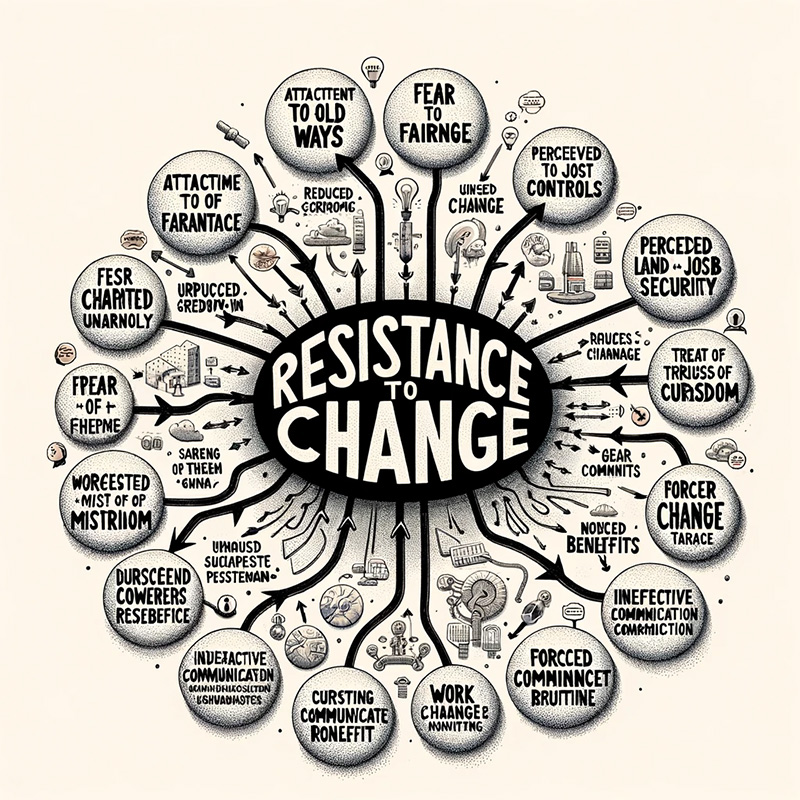
As a budding medical student, my journey into the labyrinth of medical literature began intriguingly with Arthur Hailey’s “Final Diagnosis.” This novel, a masterful blend of fiction rooted in the stark realities of medical science, opened up a world where the drama of life and death unfolds in the corridors of a hospital. “Final Diagnosis” isn’t just a story; it’s a mirror reflecting the intense struggles between the unyielding forces of tradition and the relentless tide of innovation. Within its pages, two compelling characters emerge: Dr. Joe Pearson, the embodiment of old-school methodology, staunchly resisting the winds of change, and Dr. David Coleman, a visionary pathologist who champions the cause of progress with a forward-thinking zeal. This clash of titans in a world where life hangs in the balance does more than just entertain; it invites us into a deeper contemplation of why change is so vital yet so vehemently resisted. It’s in the electric air of this confrontation that our quest to understand the essence of change and human nature’s curious dance with it begins.

Change is a constant, the unchanging phenomenon of the universe. Heraclitus, an ancient philosopher, aptly stated, “Change is the only constant in life.” This statement underscores the perpetual motion of transformation that governs everything from cosmic events to the evolution of societies and personal growth. In the business world, organizations that adapt to change are the ones that remain progressive and successful. The same applies to individuals; those who embrace change are often the ones who thrive in an ever-evolving world.
Adapting to change in the medical field is crucial to improve patient care and respond to new health challenges. Rapid technological advancements, like telemedicine and AI, enhance efficiency and accuracy in patient care. With diseases evolving, as demonstrated by COVID-19, adapting ensures medical practices stay effective. Keeping up with regulatory changes ensures compliance and high care standards. Adapting also improves healthcare system efficiency, addresses changing population demographics, and integrates innovations from ongoing research. Global health crises necessitate a flexible response, while personalized medicine and interdisciplinary collaboration optimize patient-specific treatments and leverage diverse expertise. Patient engagement is also evolving, with higher expectations for involvement in their healthcare. Overall, adaptability in medicine is vital for high-quality care and meeting the demands of an ever-changing healthcare landscape.
Why people resist change?

Despite the clear advantages and the inevitability of change, resistance to it remains a frequent challenge, often perplexing managers who lament, “People are resisting change.” Understanding the underlying reasons for this resistance is crucial in managing and effectively facilitating change.
One common reason for resistance is an attachment to old ways. Many people have a deep-seated attachment to what is familiar, often deriving comfort from established routines or a sense of nostalgia for the past. Alongside this, change often brings uncertainty, leading to a fear of failure. As Nelson Mandela wisely observed, “It always seems impossible until it’s done.” This fear can be paralyzing, preventing individuals and organizations from taking the steps necessary for change.
Change can also be perceived as a threat, leading to a loss of control over familiar situations. In the workplace, this might manifest as a reduction in freedom or diminished power and influence. Additionally, especially with technological or organizational changes, there is often a perceived threat to job security, which further fuels resistance. The unknown elements of change can be intimidating, creating a sense of too much uncertainty and leading to significant anxiety and resistance.
Another factor is the climate of mistrust. If there is a prevailing atmosphere of mistrust towards leadership or within the organization, any proposed change is likely to be met with scepticism. Additionally, resistance often occurs when the benefits of change are not clear or well communicated. Similarly, when change is forced upon people without their consultation or participation, resistance is more likely.
Concern for co-workers also plays a role. People may worry about how change will affect their colleagues, leading to resistance. The perception that change will lead to an increased workload is another common barrier. Moreover, people generally find comfort in routine and predictability, and change disrupts this, causing discomfort and resistance.
Ineffective communication about the nature and purpose of change is another significant factor. Poor communication can lead to misunderstandings and subsequently, resistance. Lastly, the way change is managed can greatly impact resistance levels. Poorly managed change processes, especially those lacking in transparency or fairness, can exacerbate resistance and hinder the change process.
Addressing Resistance to Change
When faced with resistance, it is crucial to dig deeper to understand the underlying concerns and fears. Effective change management involves acknowledging these fears and addressing them transparently. As Mahatma Gandhi urged, “Be the change that you wish to see in the world.” This implies leading by example, demonstrating the benefits of change, and helping people envision their role in a changed environment.

In the context of Hailey’s “Final Diagnosis,” the clash between Pearson’s reluctance and Coleman’s progressive approach is not just a conflict of characters but a metaphor for the broader struggle between stagnation and progress. It highlights the need for a balanced approach to change, where the concerns of those resistant are understood and addressed, while the momentum for innovation and improvement is maintained.
Effective communication is key in this process. Explaining the reasons for change, its benefits, and the steps involved can help alleviate fears and build trust. Involving people in the change process, giving them a sense of ownership, and providing training and support can also ease the transition.
Finally, change, while challenging, is essential for growth and progress. Understanding and addressing the reasons for resistance to change can facilitate smoother transitions, whether in the medical field as portrayed in Hailey’s novel or in any other aspect of life. By embracing change and helping others to do the same, we can collectively move towards a more adaptive, innovative, and successful future.
Prof. Dr. Prahlada N. B
18 November 2023
New Delhi.

















Prahlada Sir 💐
Medical landscape is constantly ‘changing’ & ‘evolving’ for the good of mankind.
From diagnostic equipments to telemedicine, healthcare professionals have to embrace all new innovations & stay updated with latest evidence based practices, for the benefit of our patients & to give them latest available treatment.
Whenever a global health crisis arises, as in the case of Covid-19 pandemic 😷, health care professionals have to quickly ‘adapt’ to the unique challenges posed by the virus 🦠, like safety precautions, collaborating with Govt & across all medical specialities…to give our best to affected patients.
Being in touch with latest research & emerging trends, ensures that health care providers give the best available care to their patients.
So to summarise….
ReplyAs vividly told by you Prahlada Sir, ‘Adaptability’ forms the key attribute for health care professionals in modern medicine.
By embracing ‘change’, staying updated with latest on each disease or disorder, & being updated with latest technologies, health care professionals can provide quality care to their patients.
Dear Dr. Prahlada
ReplyYour article on Time For Change is very practical. I also had to experience this problem of getting adapted to change in my professional life and I also had resisted it initially. But when I came to know the benefits of usefulness I enjoyed the change. As you correctly said the change has to be gradual and it is very important to explain and help the person to get adapted to the new thing which is beneficial for the health care people as well as humanity 🌹🌺🙏🏻